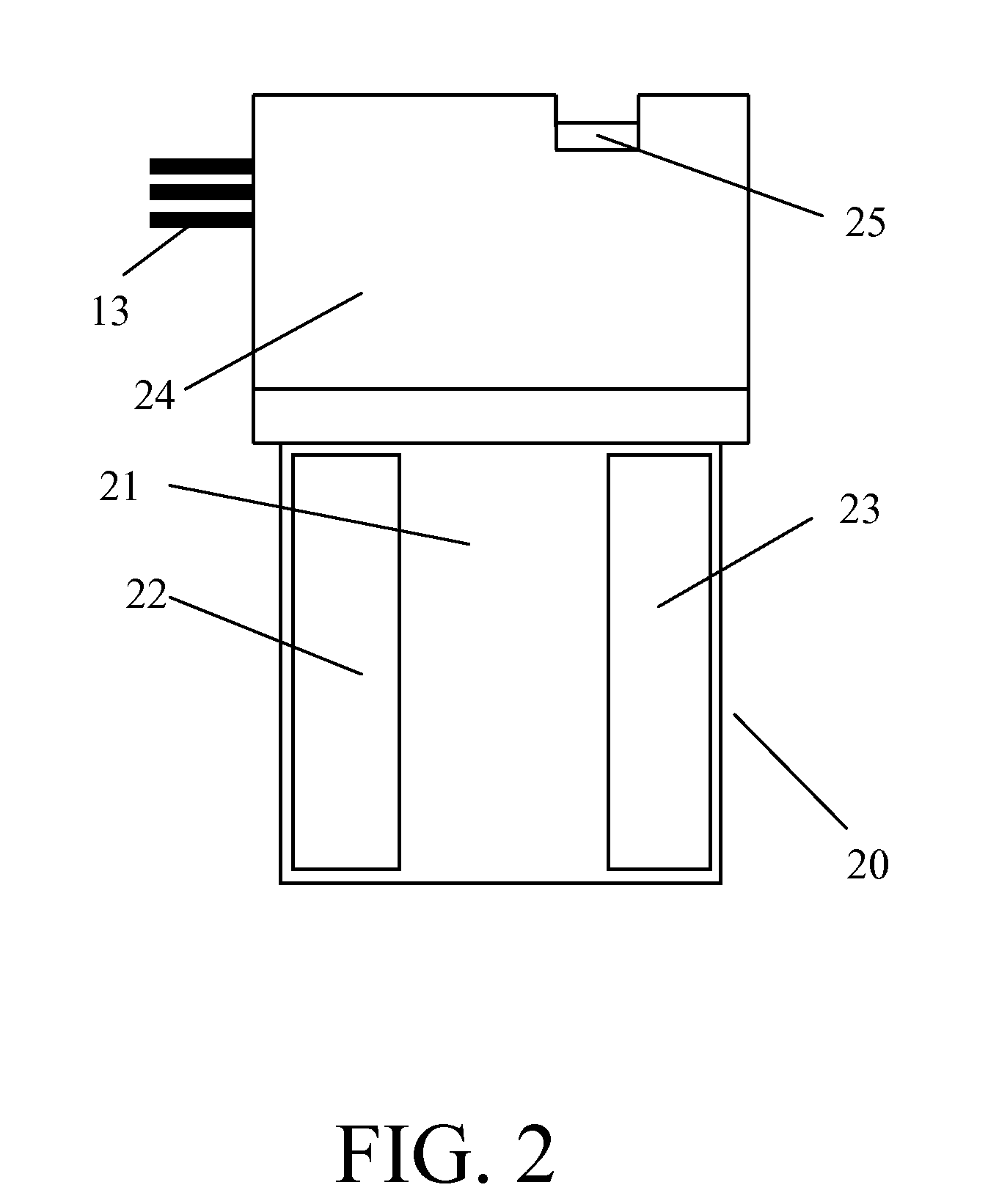Moisture Probe and System
a technology of moisture probe and system, applied in the direction of resistance/reactance/impedence, instruments, etc., can solve the problems of no feedback mechanism, serious under-watering of plants, and excessive watering leading to runoff, so as to reduce power dissipation and emissions, and small form factor
- Summary
- Abstract
- Description
- Claims
- Application Information
AI Technical Summary
Benefits of technology
Problems solved by technology
Method used
Image
Examples
Embodiment Construction
[0027]Referring to FIG. 1 an irrigation system is represented by a water solenoid-valve 11 and present invention 20 buried in soil 12 and is further electrically connected to each other with electrical wiring 13. The moisture probe and system 20, and water solenoid-valve 11 is further connected directly to 24VAC in a preferred embodiment.
[0028]FIG. 2 illustrates a close-up representative scaling of the moisture probe and system 20 from FIG. 1. There are two primary components to the invention 20, the electronics housed in case 24, and the probe 21. The probe 21 is a substrate containing two conductive plates 22 and 23 that form two plates of a capacitor. This probe assembly 21 is further structurally and electrically connected to the electronics in case 24. The case 24 provides a protective environmental barrier for the electronics. A temperature sensing electrode 25 has been integrated as part of the electronics case 24. The wires 13 enter case 24 to provide power for the invention...
PUM
 Login to View More
Login to View More Abstract
Description
Claims
Application Information
 Login to View More
Login to View More - R&D
- Intellectual Property
- Life Sciences
- Materials
- Tech Scout
- Unparalleled Data Quality
- Higher Quality Content
- 60% Fewer Hallucinations
Browse by: Latest US Patents, China's latest patents, Technical Efficacy Thesaurus, Application Domain, Technology Topic, Popular Technical Reports.
© 2025 PatSnap. All rights reserved.Legal|Privacy policy|Modern Slavery Act Transparency Statement|Sitemap|About US| Contact US: help@patsnap.com



